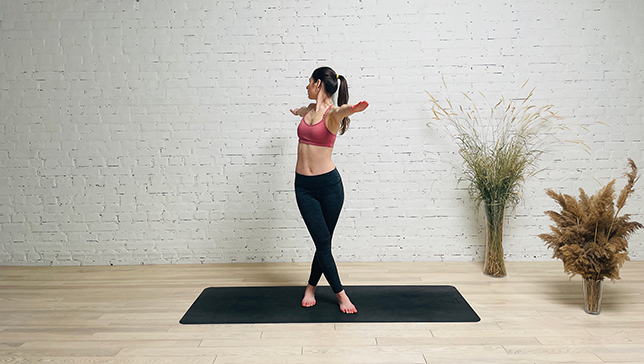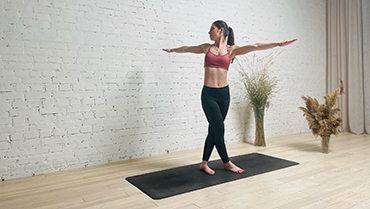Standing Spinal Twist - Katichakrasana

Contents
Standing Spinal Twist or Katichakrasana (Ka-Ti-Chak-Raah-Suh-Nuh) translates into a posture in which you will perform circular motions from your waist. Kati means the waist. Chakra stands for the wheel or rotation, and asana, as you know, is posture. This well-structured routine aims to trim down excess fat around the waist and the lower abdomen. The routine is best performed in the standing position with feet apart. You will see in the methods segment that this asana is not impossible and is ideal for daily stretching.
Pose Detail
- Difficulty: Beginners
- By Type: Chest Opening Yoga Poses, Restorative Yoga Poses, Shoulder Opening Yoga Poses, Strengthening Yoga Poses
- Body Position: Standing Yoga Poses, Twist Yoga Poses
- By Benefit: Yoga Poses For Neck Pain, Yoga Poses For Stress Relief
Step-by-Step Instructions
Benefits and Contraindications
Improves posture
Induces relaxation
Relieves anxiety and other tensions
Tones the spine
Improves digestion and acidity problems
Pregnancy
Spinal, neck or waist injury.
In presence of abdominal inflammation
Photo poses in different angles

Modifications, Props and Tips
- Hold a rubber block in length between your palms in the centre position and press it gently. Now when you’re twisting, it will help you to maintain a gap in between your arms.
- In case of tightened shoulder, a modification of Katichakrasana can be performed. For this,
Keep your arms down in the natural position. Twist your waist while hands swinging freely with twisting waist. Do not bend the arms. Take wherever they reach in these movements.
Then slowly come back to the center position.
Frequently Asked Questions
Variations
- Standing Side Stretch Pose
- Standing Twist Straight Arms
- Trunk Twisting Pose
Top Preparatory Poses
- Mountain Pose
- Standing Cat Cow Pose
- Swaying Palm Tree Pose